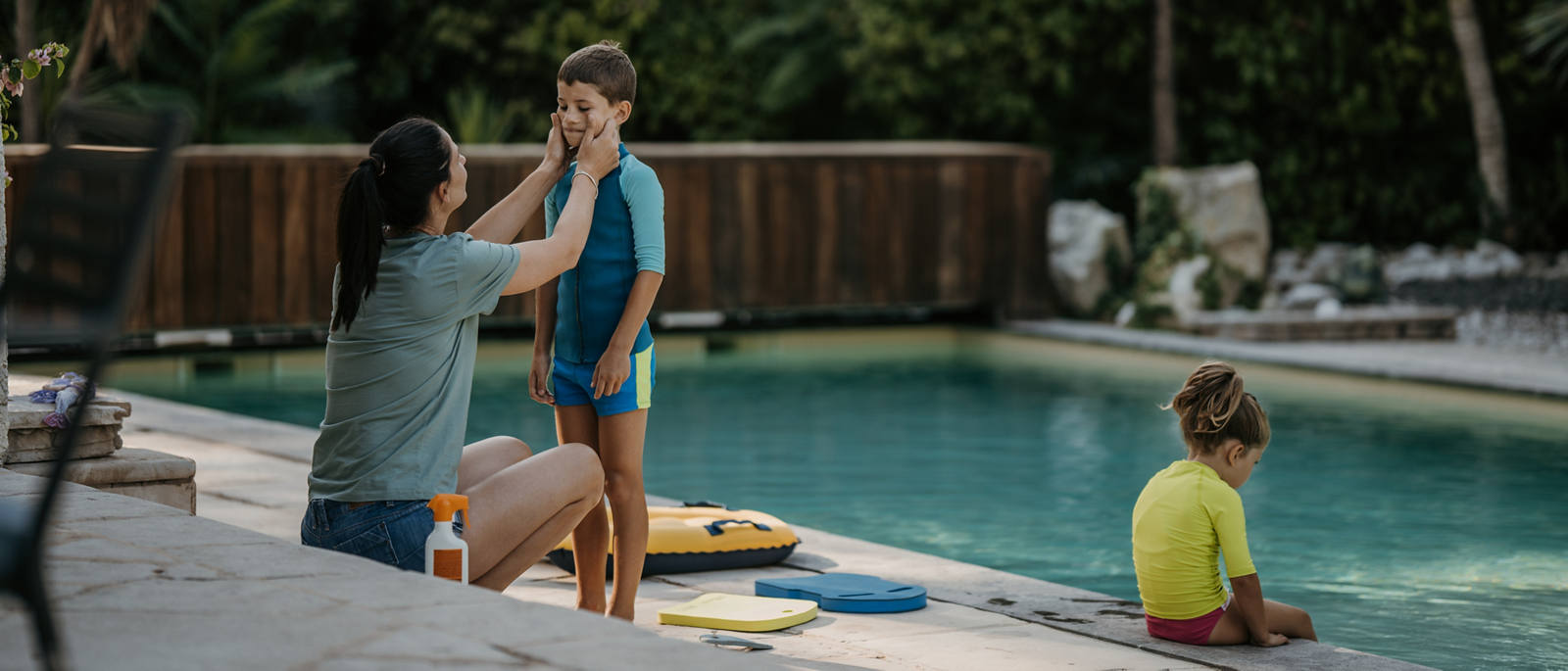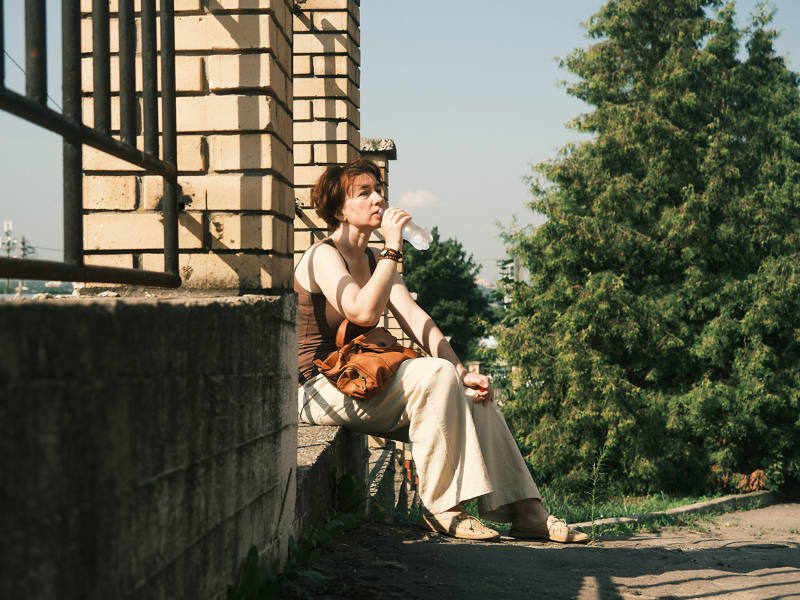Summer sun: the right protection

Looking forward to summer and the sun? Good! But make sure you have the right protection. While the use of sunscreen is essential, this alone is not enough. We explain what else is important.
Protection offered by shade
Although simple to take, protective measures are often carelessly disregarded. Staying in the shade – especially between 11am and 3pm – is one of the best. Whether under a tree or sun umbrella, the main thing is that it’s big enough to block lateral sun rays too. Special care should also be taken with sun-reflecting surfaces such as water, sand and snow.
Protect your skin with sunscreen
Sunscreen needs to be applied both when the sun is shining and when the weather is overcast. This is because 80% of the rays still reach the skin when the sky is overcast. In the mountains, by water and in snow, additional caution is required due to the particularly strong UV intensity.
Apply sunscreen thickly
To achieve maximum protection, 2 mg/cm2 of sunscreen must be applied. This is equivalent to about 30 ml of sunscreen for an adult's body.
Reapply the same amount of sunscreen after 2-3 hours and after swimming.
These body parts need more protection
The more exposed parts of the body deserve special attention: nose, cheeks, lower lip, neck, ears, backs of the hands and feet. These body parts are at particular risk for developing skin cancer.
Sensible clothing
For optimal protection from UV rays, the following clothing and headgear is best:
- Dark clothes protect you better than light clothes and loose are better than tight.
- Tightly woven clothing blocks UV rays better than thin, translucent fabrics.
- Artificial fibres provide better protection than natural fibres.
- Dry clothes let less UV radiation through than wet textiles.
Always wear sunglasses
The eyes are particularly sensitive to excessive UV radiation and can become permanently damaged. Symptoms can include inflammatory reactions of the cornea or conjunctiva – and the risk of developing cataracts increases. If left untreated, chronic clouding of the eye lens can lead to blindness.
Prioritise UV protection over tinted shades
Don't use tinted glasses without UV protection, as the dark tint causes the pupils to dilate which allows more radiation to reach the eyes.
Caution with medication and sun
It’s important to know that some medications reduce the protection of sunscreen or increase the skin's sensitivity to light. Examples include antibiotics from the tetracycline group or St. John's wort products.
Painful skin reactions possible
These medications (list not exhaustive) cause painful skin reactions in combination with the sun:
- acne products
- antibiotics
- hormones (e.g. oestrogen)
- heart and circulation medication (e.g. for high blood pressure)
- antidepressants
- antimalarials
Protect yourself from side effects: 3 tips for you
- Read the package leaflet: when reading through the accompanying leaflet, note the information on “light sensitivity”.
- Consult your doctor: check with your doctor or pharmacy before you go on holiday whether your medication allows you to go in the sun.
- Dosage: consult your doctor about reducing the dosage of essential medicine.
Children’s skin is particularly sensitive
Basically, the same rules apply to children as to adults. However, children's skin is particularly vulnerable because it’s thinner and therefore more permeable to UV rays. Every sunburn in childhood increases the risk of developing skin cancer later on. Therefore, clothing, sunscreen, sunglasses and a sun hat with a wide brim are all needed to provide comprehensive protection for children. Children should also apply sunscreen and wear UV-protective clothing even in the shade.
The following points are also important:
-
Never expose children under one year of age to direct sunlight.
-
Use water-resistant sunscreen with sun protection factor 30 and UVA and UVB protection.
-
For children up to age two, use sunscreen with a high component of micropigments that reflect the sunlight.
-
Don't use products containing allergens, e.g. perfume.
-
Dress children in special UV-protective clothing, which also protects when wet and is therefore also useful as swimwear.
-
The use of sunscreen and UV-protective clothing applies even in the shade.



